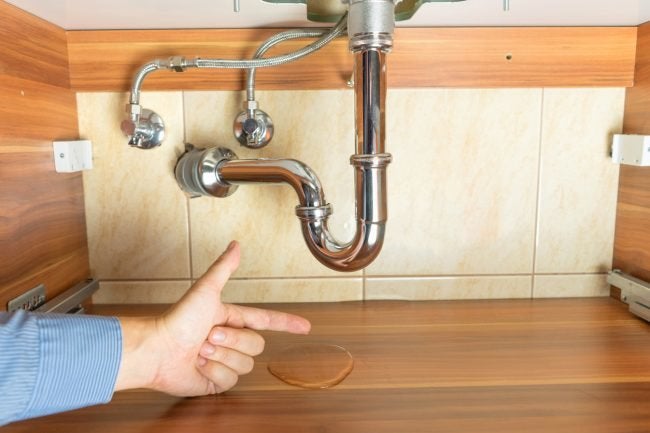The article author is making a few good points on the subject of Leaking water lines overall in the article in the next paragraphs.

Early discovery of dripping water lines can mitigate a prospective catastrophe. Besides saving you money, it will certainly decrease the stress as well as disappointment. The moment you locate a leakage, calling your plumber for repairs is the most effective option. Some tiny water leakages may not be noticeable. If you can not find it with your naked eyes, below are some hacks that assist.
1. Examine the Water Meter
Every residence has a water meter. Examining it is a surefire way that helps you discover leaks. For starters, turn off all the water resources. Ensure no one will flush, utilize the faucet, shower, run the washing equipment or dishwashing machine. From there, go to the meter and watch if it will change. Given that no one is using it, there should be no motions. That suggests a fast-moving leak if it relocates. Also, if you detect no changes, wait a hr or two and check back once more. This indicates you may have a slow leakage that might even be underground.
2. Examine Water Consumption
Examine your water bills and track your water usage. As the one paying it, you need to notice if there are any type of disparities. If you spot sudden changes, despite your usage being the same, it indicates that you have leakages in your plumbing system. Bear in mind, your water costs need to drop under the very same array every month. A sudden spike in your bill shows a fast-moving leakage.
On the other hand, a steady boost every month, despite the very same practices, reveals you have a slow-moving leak that's likewise gradually rising. Call a plumber to completely inspect your residential or commercial property, particularly if you feel a warm area on your flooring with piping below.
3. Do a Food Coloring Examination
When it comes to water consumption, 30% comes from bathrooms. If the color in some way infiltrates your dish throughout that time without flushing, there's a leakage between the tank as well as dish.
4. Asses Exterior Lines
Do not neglect to examine your exterior water lines also. Must water leak out of the connection, you have a loose rubber gasket. One tiny leakage can throw away tons of water and also increase your water expense.
5. Examine the circumstance and evaluate
House owners ought to make it a habit to inspect under the sink counters and also inside cabinets for any type of bad odor or mold and mildew development. These 2 red flags indicate a leak so timely focus is called for. Doing regular evaluations, even bi-annually, can save you from a major issue.
Check for stainings as well as weakening as a lot of pipes and also appliances have a life expectancy. If you presume dripping water lines in your plumbing system, don't wait for it to intensify.
Early discovery of leaking water lines can reduce a possible disaster. Some small water leakages might not be noticeable. Checking it is a guaranteed method that aids you uncover leakages. One tiny leak can squander heaps of water and also increase your water costs.
If you suspect dripping water lines in your plumbing system, do not wait for it to rise.
WARNING SIGNS OF WATER LEAKAGE BEHIND THE WALL
PERSISTENT MUSTY ODORS
As water slowly drips from a leaky pipe inside the wall, flooring and sheetrock stay damp and develop an odor similar to wet cardboard. It generates a musty smell that can help you find hidden leaks.
MOLD IN UNUSUAL AREAS
Mold usually grows in wet areas like kitchens, baths and laundry rooms. If you spot the stuff on walls or baseboards in other rooms of the house, it’s a good indicator of undetected water leaks.
STAINS THAT GROW
When mold thrives around a leaky pipe, it sometimes takes hold on the inside surface of the affected wall. A growing stain on otherwise clean sheetrock is often your sign of a hidden plumbing problem.
PEELING OR BUBBLING WALLPAPER / PAINT
This clue is easy to miss in rooms that don’t get much use. When you see wallpaper separating along seams or paint bubbling or flaking off the wall, blame sheetrock that stays wet because of an undetected leak.
BUCKLED CEILINGS AND STAINED FLOORS
If ceilings or floors in bathrooms, kitchens or laundry areas develop structural problems, don’t rule out constant damp inside the walls. Wet sheetrock can affect adjacent framing, flooring and ceilings.
https://www.servicemasterbyzaba.com/blog/how-to-detect-water-leakage-in-walls/

I am just very taken with Leaking water lines and I really hope you appreciated the entire blog posting. Are you aware of another individual who is truly interested in the topic? Be sure share it. I am grateful for your time. Kindly pay a visit to our site back soon.